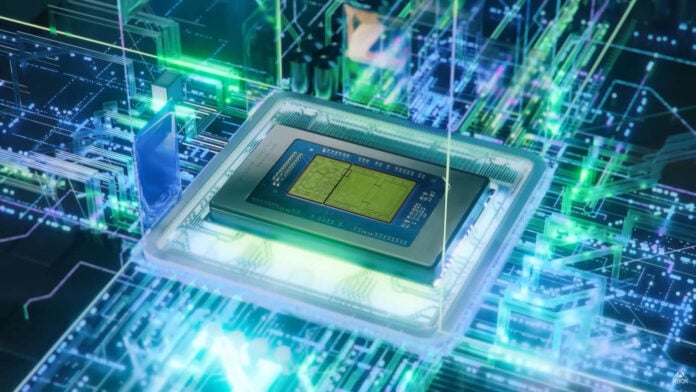Microsoft’s next-gen Xbox console is said to feature a larger APU than the competing PlayStation 6, allowing it to deliver up to 33% higher performance. Codenamed Magnus, this chip is rumoured to measure about 408 mm², mixing Zen 6 CPU cores and RDNA 5 GPU compute units (CUs). If true, this Xbox will likely be more expensive than the PlayStation 6, enticing users through its performance and flexibility instead.
According to Moore’s Law Is Dead (MLID), the Magnus-powered Xbox is said to be built as a hybrid PC/console machine, potentially supporting Windows and all its third-party stores. Therefore, Microsoft has opted for a chip design resembling what is available on PC, with a mix of Ryzen and Radeon chiplets, linked through a bridge die. The so-called Magnus chip at its heart is reportedly spanning around 408mm² die area in total, which is 46% larger than the APU rumoured to be used on the PlayStation 6.
This space is split into 144mm² for the SOC die, which includes the CPU, NPU, I/O, and video out, and 264mm² for the GPU. Both are expected to be manufactured using TSMC’s N3P node. For comparison, the PlayStation 6 is expected to feature a 280mm² die packing 52 RDNA 5 CUs alongside nine Zen 6/c cores.
The extra real estate thus enables the Xbox to have a larger GPU with 24MB of L2 cache, boasting 70CUs – two of which are disabled. These are split into four shared engines: three with 9 workgroups (54CUs in total) and one with eight workgroups (16CUs). Each shader engine has two shader arrays. This is an unusual design since previous RDNA architectures used a symmetrical layout. MLID believes that this GPU could potentially deliver RTX 5080 raster performance and maybe RTX 5090 ray tracing performance. We surely won’t mind.
On the CPU side, the Magnus APU is said to house a mixture of Zen 6 cores: up to 3 full-size Zen 6 cores plus 8 dense Zen 6c cores. These share only 12MB of L3 cache to cut down on die size and save cost. For reference, the 12-core Ryzen AI 9 HX 370 (Strix Point) houses 24MB of L3 cache. That said, the final active core count is still uncertain, as Microsoft could opt for a nine-core CPU like the PlayStation 6. Phew.
As for memory, the CPU and GPU are expected to share up to 48GB of GDDR7 memory linked via a 192-bit bus. Smaller configurations, such as 36GB or 24GB, are also possible, but if the Xbox is truly targeting a hybrid PC/console design, 48GB will be pretty much needed to compete against regular desktops. Overall, this Xbox is expected to consume between 250W to 350W, which is noticeably higher than the 200-ish watts of current-gen consoles.
While it’s still too early to talk about pricing, MLID estimates that the next-gen Xbox could retail around $1,200, unlikely below $800. This will be a hard pill to swallow for players, as even the revised $599 price of the Series X was badly received. That said, this may not matter much if the Xbox turns out to be a competent PC too, as it would undercut OEM prebuilds in price/performance. Rendezvous in 2027 to find out.


